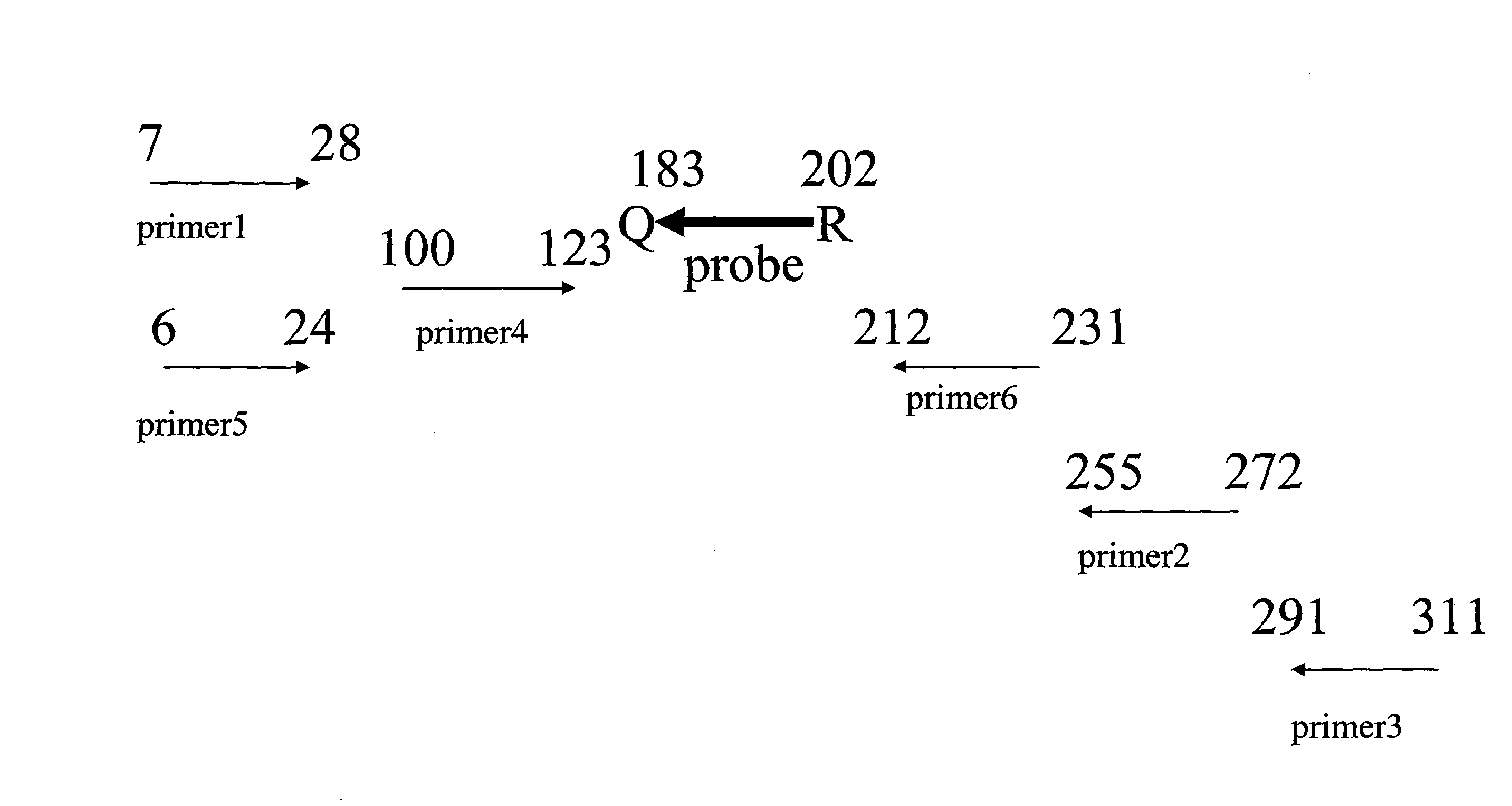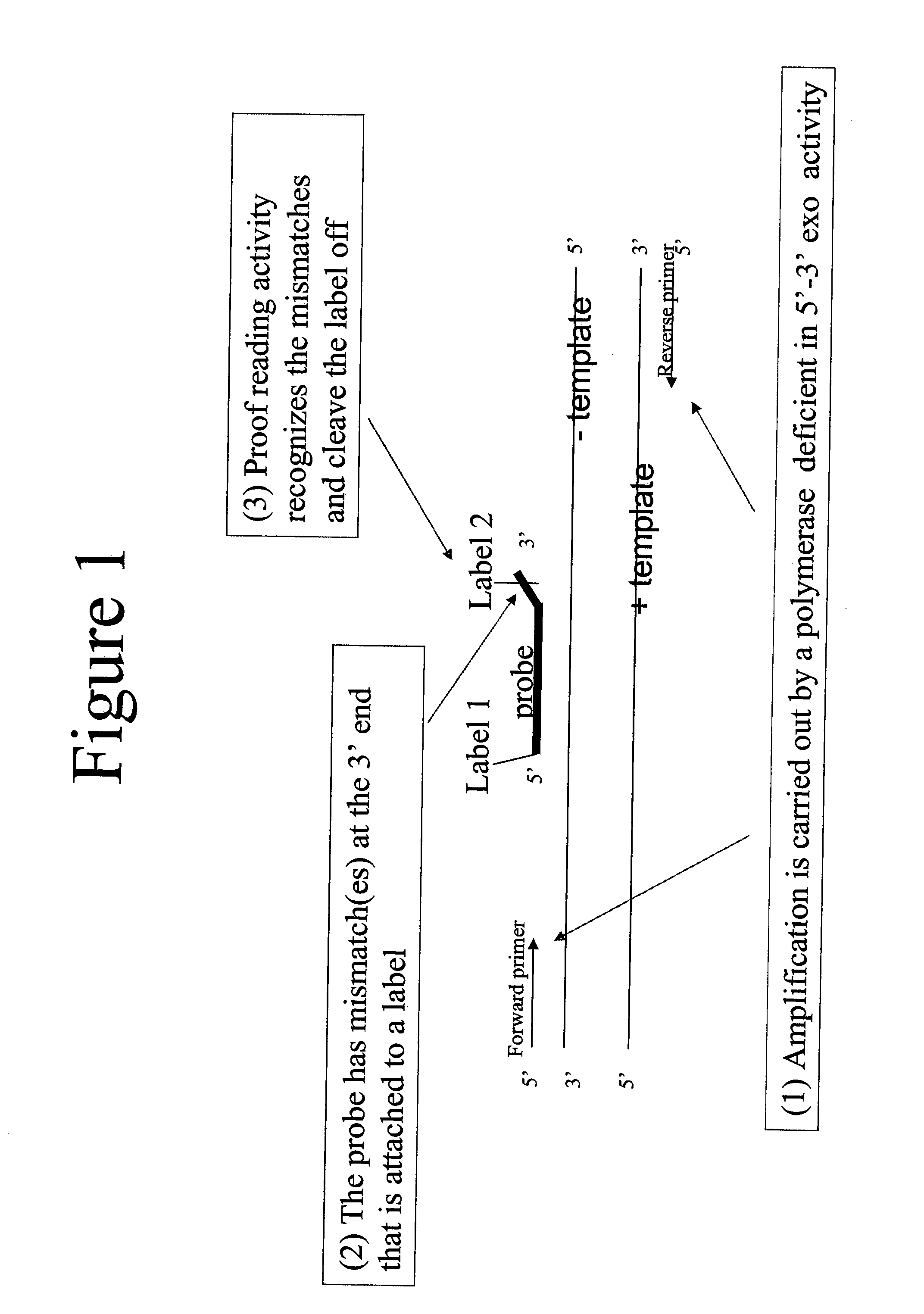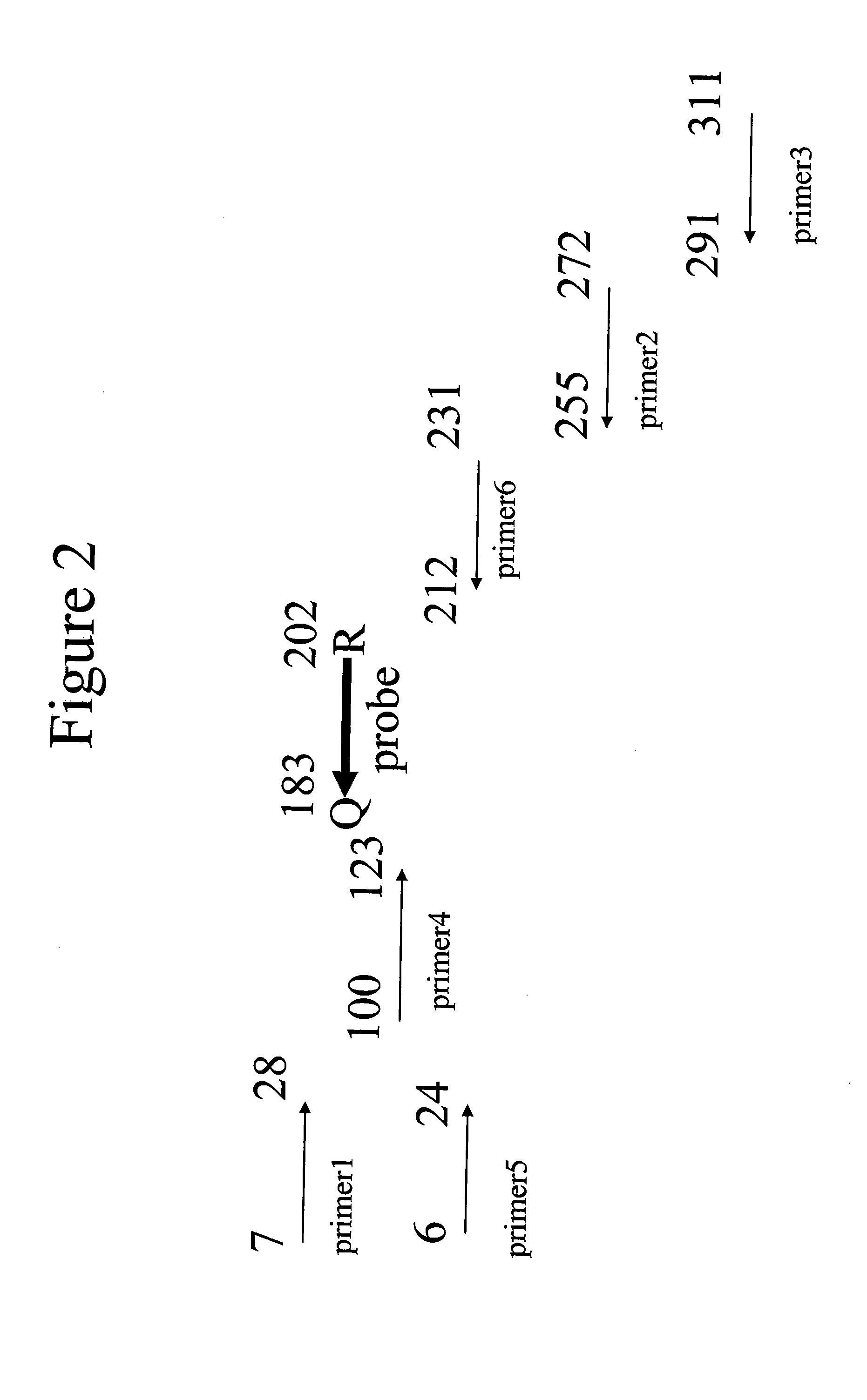Quantitative amplification with a labeled probe and 3' to 5' exonuclease activity
a technology of exonuclease activity and labeled probes, applied in the field of quantitative amplification with labeled probes and 3' to 5' exonuclease activity, can solve the problem of mismatching of the 3′ nucleotide of the prob
- Summary
- Abstract
- Description
- Claims
- Application Information
AI Technical Summary
Benefits of technology
Problems solved by technology
Method used
Image
Examples
example 1
Quantitative PCR Using a Polymerase Having Proofreading Activity and a Dual-Labeled Probe
[0101]The proofreading DNA polymerase, Phusion™, a Pyrococcus polymerase with a processivity enhancing domain, was used in real-time qPCR reactions with a dual-labeled probe. This assay was compared to assays using a TaqMan™ probe. The probes are shown below. The probes are labeled with a fluorescenc dye (Cy5) at the 5′ end and a quencher (BHQ-2) at the 3′ end. The probe used in the proofreading assay has a mismatched 3′ nucleotide. It also has a phosphorotioate linkage between the last 2 bases, although inclusion of such a linkage is optional.
TaqMan ™ Probe:5Cy5 / CAAGCTTCCCGTTCTCAGCC / 3BHQ2Proofreading assay Probe:5Cy5 / CAAGCTTCCCGTTCTCAGC*G / 3BHQ2
The probes were in qPCR reactions using a glyceraldehyde 3-phosphate dehydrogenase (GAPDH) template. The primers used in the PCR reactions and the relative position of the probe is shown in FIG. 2.
PCR amplification reaction mixtures contained the followin...
example 2
Quantitative PCR Using a Dual-Labeled Probe and Separating the Polymerase and Exonuclease Activity
[0108]This example provides an illustration of a reaction in which the polymerase and 3′ to 5′ exonuclease activities are provided by separate proteins.
[0109]PCR was performed using a hot start DNA polymerase (HS DyNAmo) that lacks 5′ to 3′ exonuclease activity. The 3′ to 5′ exonuclease activity is provided by a hybrid polymerase (having a Pfu polymerase as one of the parents) where the hybrid polymerase substantially lacks polymerase activity (an exo+poi− polymerase). The reaction contained the following:
1×HS DyNAmo mix
[0110]112 U / ml exo+pol− enzyme
0.3 μM forward primer
0.3 μM reverse primer
0.3 μM dual-labeled probe
107, 106, 105, or 0-copy pGAPDH template
The reaction conditions were:
1. 95° C. 10 min
[0111]2. 95° C. 15 s
[0112]3. 60° C. 30 sec
4. read
5. 72° C. 30 sec
[0113]6. read
9. go to 2 for 49 times
10. 72° C. 10 min
[0114]The results (FIG. 5) show that in the two-enzyme (HS DyNAmo and a 3...
example 3
Quantitative qPCR Using a Probe with a Preferential Subsequence at the 3′ End
[0115]To test whether there was any probe sequence preference exhibited by the 3′ to 5′ exonuclease activity, probes having different 3′ ends were tested in qPCR reactions of the invention. The exonuclease activity in this example was an exo+pol− enzyme, such as that employed in Example 2. First, a 3′ to 5′ exonuclease assay was used to test 3′ to 5′ exonuclease activity toward probes with different 3′ endings. The results indicated that the sequence of the last 10 bases, e.g., the last 5 bases, of the probe affected the 3′ to 5′ exonuclease activity of the exo+pol− enzyme. The results demonstrated that probes having a 3′ end sequence (before the mismatch) of TCAGC had the highest exo activity and provided improved performance in qPCR reactions of the invention in comparison to the other sequence. As there are 1024 possible sequences for a 5-base DNA element, additional sequences may also provide improved p...
PUM
 Login to View More
Login to View More Abstract
Description
Claims
Application Information
 Login to View More
Login to View More - R&D
- Intellectual Property
- Life Sciences
- Materials
- Tech Scout
- Unparalleled Data Quality
- Higher Quality Content
- 60% Fewer Hallucinations
Browse by: Latest US Patents, China's latest patents, Technical Efficacy Thesaurus, Application Domain, Technology Topic, Popular Technical Reports.
© 2025 PatSnap. All rights reserved.Legal|Privacy policy|Modern Slavery Act Transparency Statement|Sitemap|About US| Contact US: help@patsnap.com



